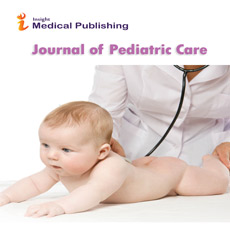Abstract
Use of Melatonin in Children and Adolescents with Primary Sleep Disorders and Sleep Disorders Associated to Autism Spectrum Disorder and Attention Deficit-Hyperactivity
Background: Melatonin is an indoleamine often used for the treatment of primary and secondary insomnia in children and adolescents. Its hypnotic effect seems to be related to both, the reduction of the cortical activation, and the inhibition of the neural system responsible for the alertness. Goals of this study are to clarify the utility and safety of melatonin use in paediatric population and in adition to determine the dosage and the time of more effectiveness of melatonin administration in children and adolescents with primary sleep disorders and those associated with neurodevelopmental disorders. Data Sources: A search was carried out on 'PubMed' with the keywords: "children insomnia melatonin"; "ADHD insomnia melatonin", "Autism spectrum disorder melatonin" restricted to publications of the last 10 years.
Results: The effectiveness of Melatonin in children and adolescent with Sleep Onset Delay (SOD) and with Delayed Sleep Phase Syndrome (DSPS) is consistently founded with different dosage, according to patient age and weight, and administered between 30 minutes and 3 hours before the apropiatte sleep onset. In children with ADHD the need for higher doses of melatonin has been set, specially in those taking medication for ADHD. In children with ASD lower doses and shorter intervals, from 30 to 60 minutes prior sleep onset has been suggested.
Conclusions: There is evidence of melatonin effectiveness in children and adolescents with sleep disorders, with few or no adverse effects and adequate security.
Author(s):
Cuesta SO and Delrio-Hortega IM
Abstract | Full-Text | PDF
Share this

Google scholar citation report
Citations : 130
Journal of Pediatric Care received 130 citations as per google scholar report
Abstracted/Indexed in
- Google Scholar
- China National Knowledge Infrastructure (CNKI)
- Cosmos IF
- WorldCat
- Geneva Foundation for Medical Education and Research
- Secret Search Engine Labs
Open Access Journals
- Aquaculture & Veterinary Science
- Chemistry & Chemical Sciences
- Clinical Sciences
- Engineering
- General Science
- Genetics & Molecular Biology
- Health Care & Nursing
- Immunology & Microbiology
- Materials Science
- Mathematics & Physics
- Medical Sciences
- Neurology & Psychiatry
- Oncology & Cancer Science
- Pharmaceutical Sciences

